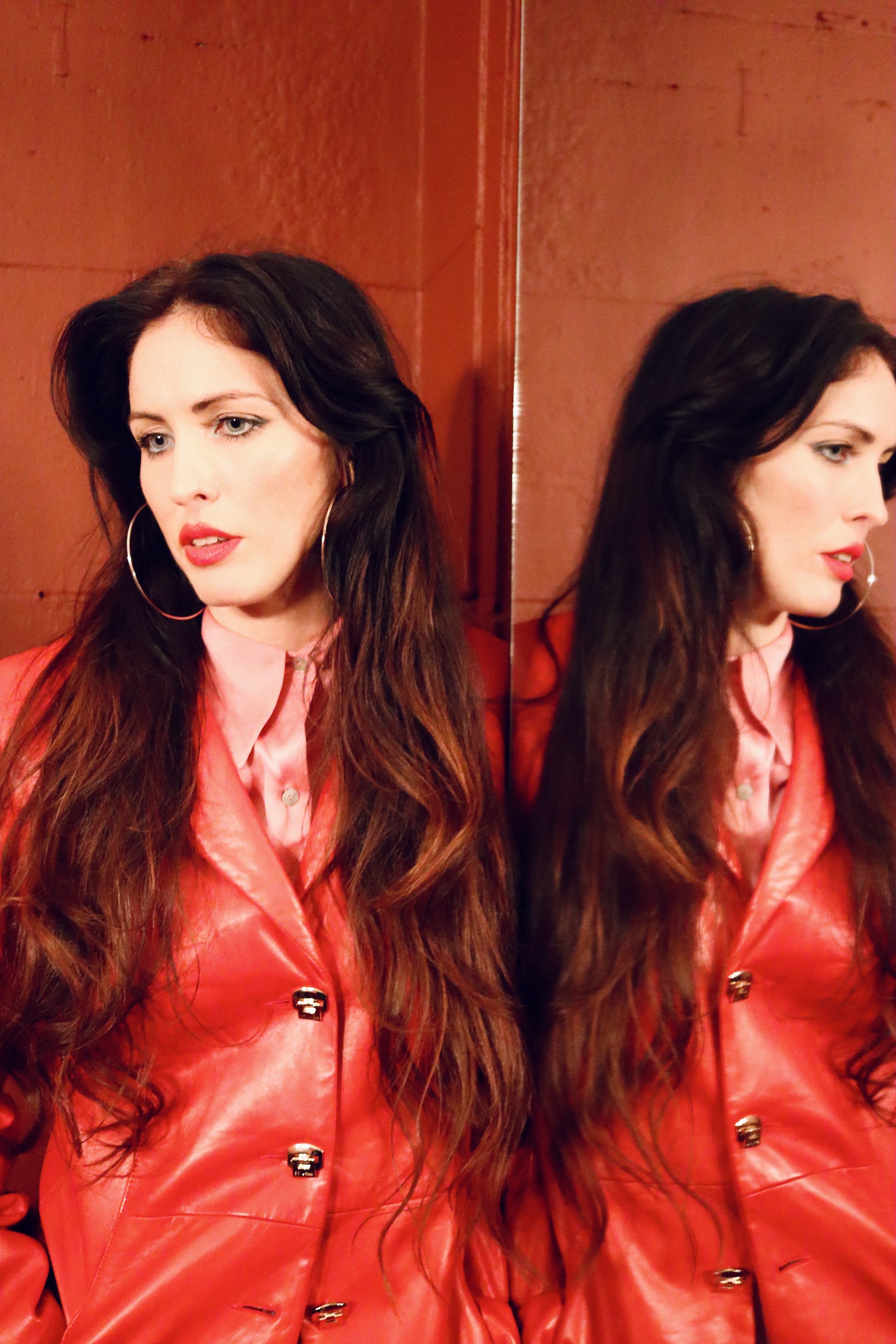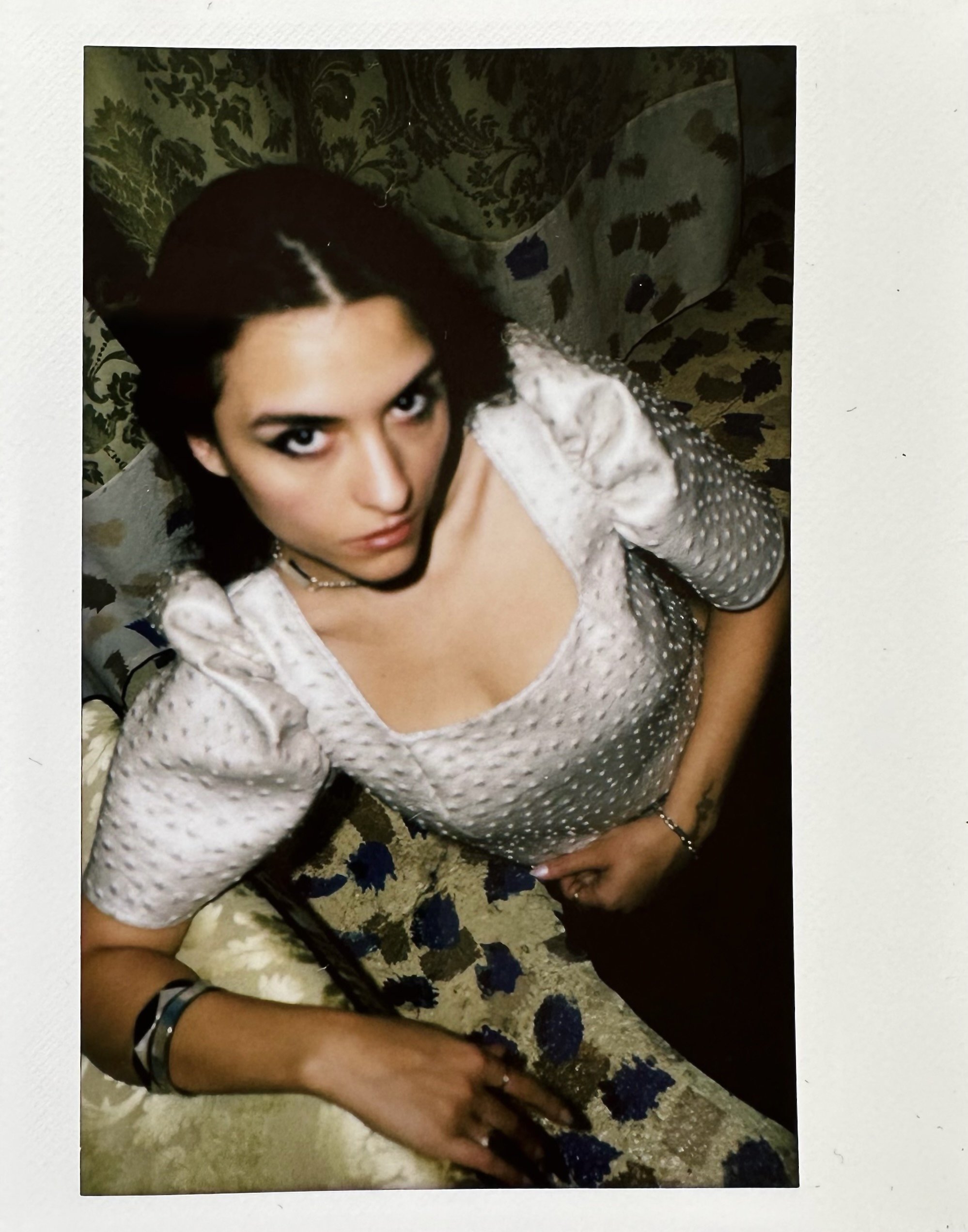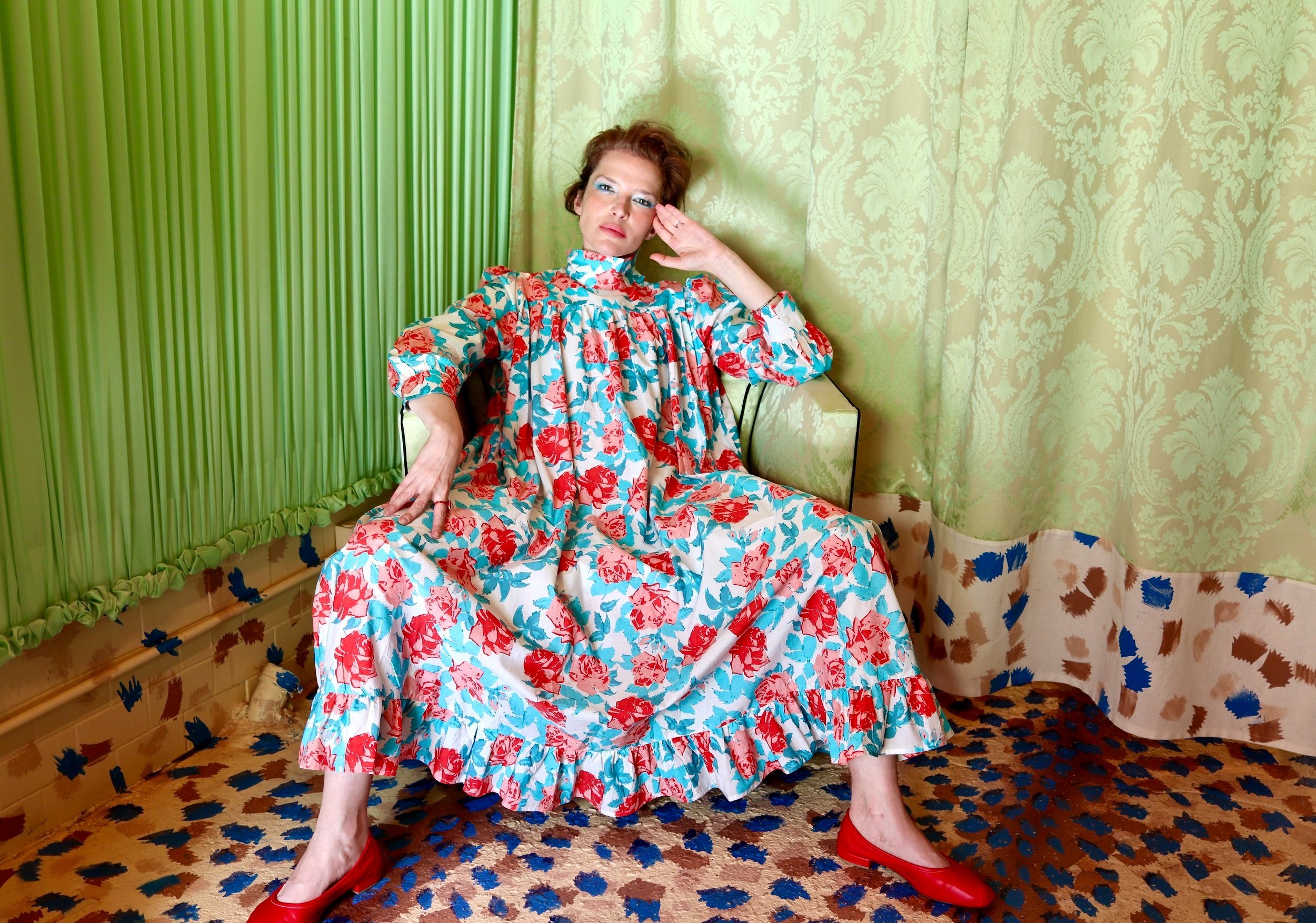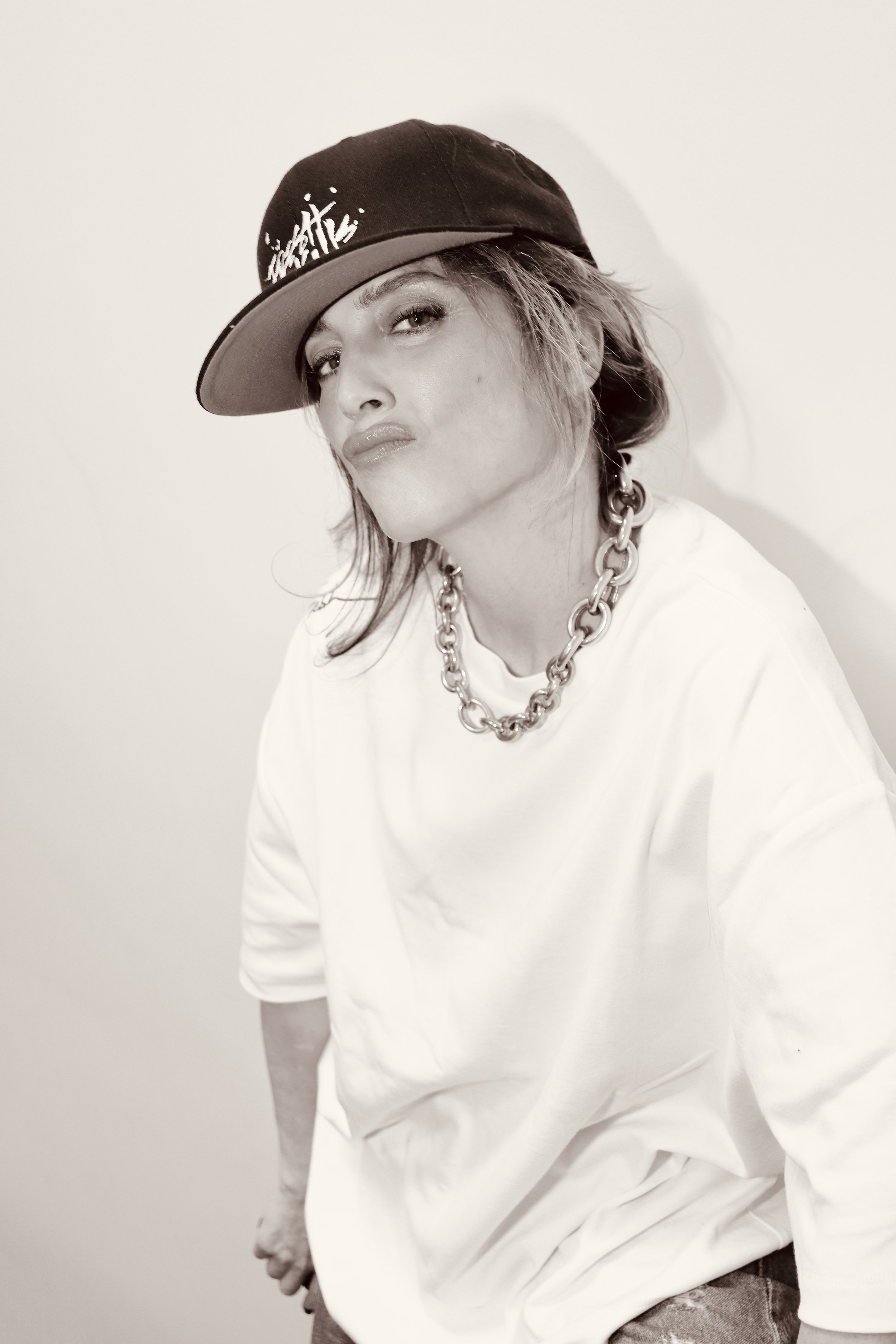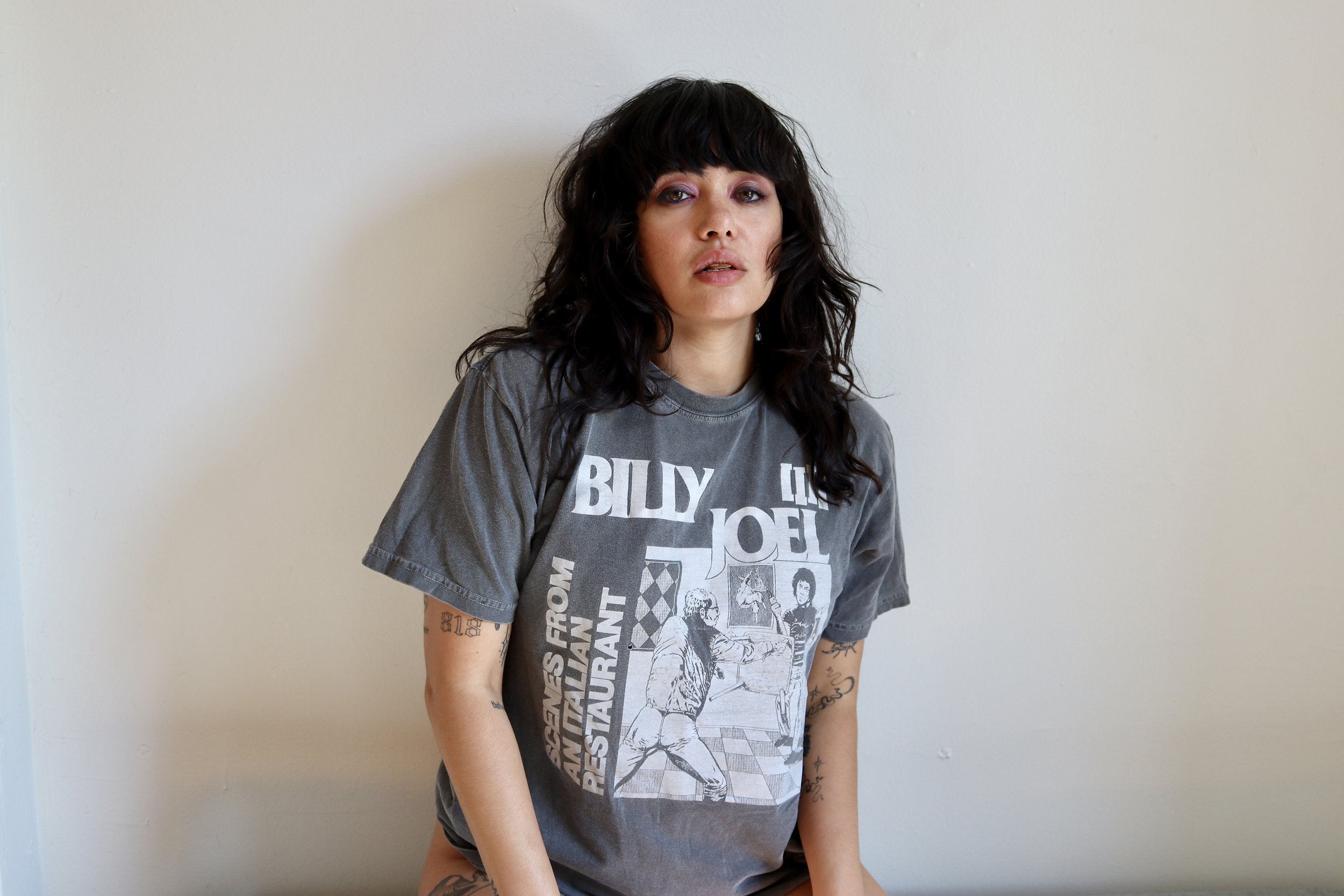Michele Hicks
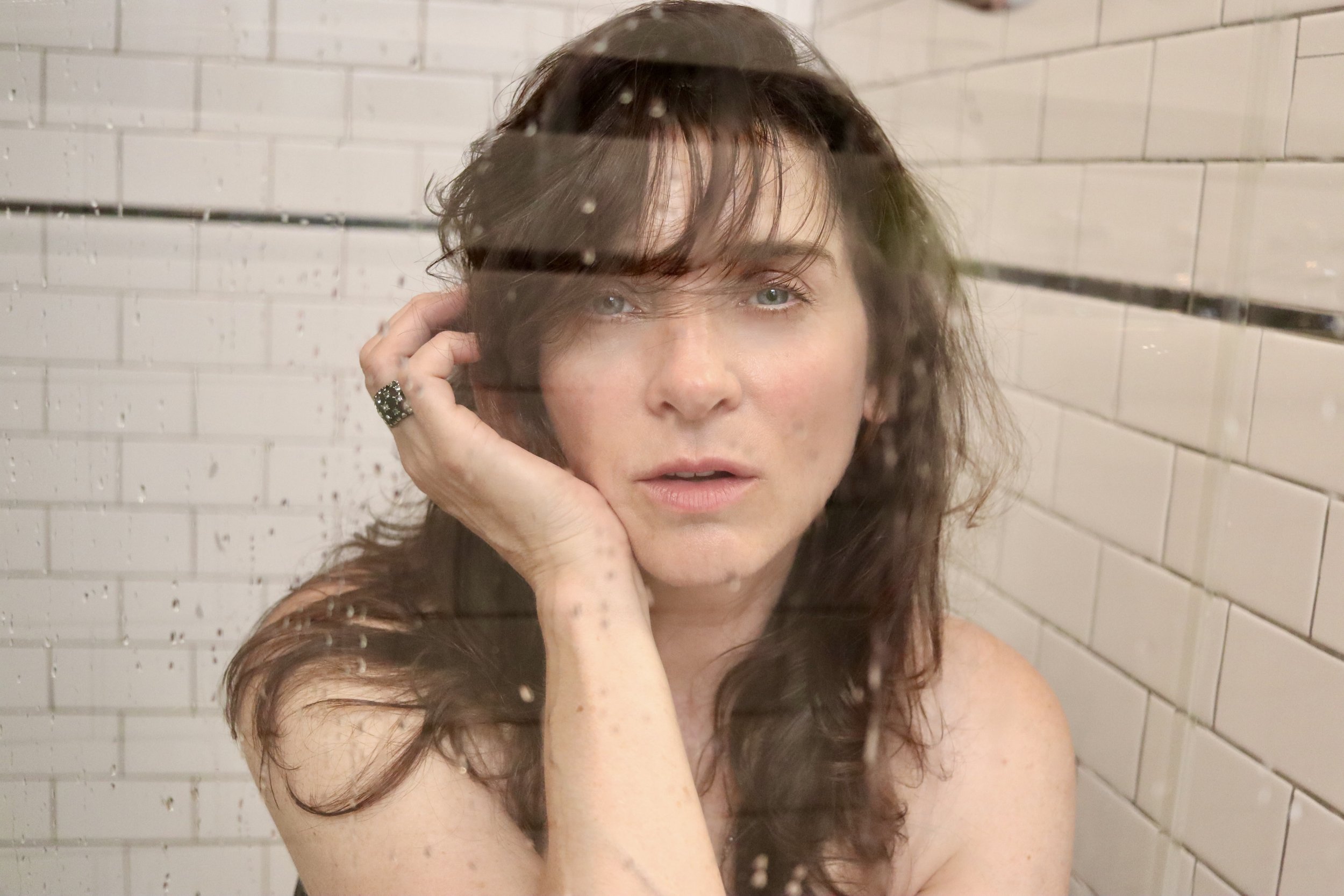
Model, actor and activist Michele Hicks reunited with her longtime friend writer/actor/Urban Raconteur George Hahn to chat and reminisce about NYC in the 90’s, getting started as a model and some of her recent projects. Michele is putting together a documentary on iconic fashion designer Anna Sui who has been a longtime friend and collaborator. In her spare time, between raising her teenage son and auditioning for acting roles, Michele has been busy cleaning out her closet and partnering up with the Vestiaire Collective to sell some of her iconic wardrobe to raise funds for the Treatment Advocacy Center TAC. A cause near and dear to her heart as she grew up in and out of foster care with siblings who struggle with developmental issues and mental illness. Scroll on down and catch our candid photos of this natural beauty, details on her charitable mission and her bare essentials…including a good steamy sauna!
George Hahn: Now my friend Michele Hicks, when I was first aware of you, you were modeling which was in the mid 90’s. How did all of that start?
Michele Hicks: I was working in the nightclub business in New York City. Bartending and working the door at nightclubs, including Limelight and a couple of other places. I wanted to model, but it wasn't really the right time. So I continued to work in that business. Then there hit a point when the Kate Moss wave came in. All of a sudden, all the people that were coming into the club who I was seeing from the working the door and everything were like you should really be modeling. I just kept hearing it over and over again. At that point, I was like, okay maybe I should put in some effort and see if that is something that's viable. I left that job and I did some tests, went around and thankfully got a pretty lucky break with a woman that was working at Wilhelmina at the time, who thought Meisel would be really into me and sent my pictures to him. And that was that. Once you work with Meisel, you're in. That's how I started.
GH: I miss that time. Not that I want to go out all night at the Limelight like right now at the age of 54 or something. No, but I'm glad I was around at that time, at Limelight, I got to go to Club USA, I remember the Tunnel You know what? I was in my 20s. I had fun. And that's what that time is for. I'm glad it existed in the form it existed for my time, for our time. And young ones are having their time, in whatever shape that takes.
MH: Exactly.
GH: Where did you grow up, Michele?
MH: I grew up in northern New Jersey, so basically like 20 to 30 minutes outside of Manhattan.
GH: And mom and dad, what did they do?
MH: Single mom, a couple siblings. My siblings both have disabilities and we were in and out of foster homes. It was pretty chaotic.
GH: Now, the last few times I've run into you, you have told me about a documentary film project you're working on, which sounds super exciting. Tell me more about it.
MH: We're in development right now!
GH: Tell me what you can.
MH: Meisel. He introduced me to Anna Sui, she was the first show I ever did. After that, she asked me to be her ‘looks model’ for a couple of seasons, for five years actually. That entails that you are the one that at the last stages, they're trying all the outfits on, they're trying to accessorize, figure out the lineup, do all that.
That gave me this amazing privilege of being in the room with her and Steven Meisel and Paul Cavaco and Bill Mullen and Aaron and Francois Nars, like this whole collection, incredible creatives and listening to the commentary it was just mind blowing to me.
I was like, what are you referencing? What does that mean? What is this? What is that? And, it informed how I moved forward in life and how I researched characters and how I understood photography and all of that. And it's this incredible process that Anna has and the people around her of all these references and the research and all that.
She's always been a very inspiring force for me and really informed how I went forward in my life creatively. I am working on developing a project on Anna Sui as a fashion designer that's been iconic, who's stayed steadfast to her vision, who hasn't sold out, still owns her name, a bad ass business woman, and also having a revival here in Generation Z. I find her story inspirational and should be out there to inspire the next generations.
GH: Last time I talked to you, we were talking about how much we appreciated Anna Sui and Steven Meisel and Garren and Bill Mullen and how, and Paul Cavaco and how they had this frame of reference that went back way before their time. And essentially, in terms of the history of movie star references to beauty references. It's almost encyclopedic. They came to the table at that time, having done a lot of homework consciously and subconsciously and how, we wonder if the younger generations are having the same kind of regard for history and what came before them and are able to tap into that bank of references, right?
MH: It definitely was an education for me and made me then look at things that way and do my homework and my research and all that. We live in this age where the reference is TikTok, not a movie from the 50s. I'm wondering whether this new generation is wanting to go back to a little analog, to dig. I'm hoping. I feel like there's signs of it, wanting vinyl, little things, yeah of a different period. I also think this is the right time for this documentary because I think the younger journey wants to see that and wants exposure, creativity and those references.
GH: Fashion, modeling, and clothes are a big part of it. Safe to assume you're a fan of clothes and of fashion. True story?
MH: Yes. Yes. For sure. Once you're dressed by the best, you're spoiled.
GH: You got hooked. You have worn and collected some amazing garments over the years. What are some favorites and standouts that have really meant something to you?
MH: A number of Galliano pieces that I have worn and owned over the years. I have this incredible coat that's on a mannequin in my living room that's basically a museum piece that I wore in the show that isn't wearable, but is a piece of art at this stage. I have this coat that I'm actually putting in this sale for Vestiaire.
It is an Ozzie Clark. Full length python coat from the late sixties early seventies. I purchased it in the early nineties, there was a very big thrifting phase. We all traveled around the world and hit the biggest, like the vintage stores everywhere that we could and who got the best kind of coolest pieces, that was definitely part of the vibe in the early nineties, which is funny enough. Now the vibe with the young kids now, yeah. This one piece I bought in probably '95 or something, and it is an Ozzie Clark. There's four of them out there in the world that were made. Sharon Tate wore one to the opening of Rosemary's Baby.
Margot Robbie wore a copy of it because they couldn't find one in Once Upon a Time in Hollywood. I have this piece, I bought it then. It's an amazing piece. I think it needs to go out into the world, so somebody else gives it energy and uses it. It's a great piece to donate the money to charity.
GH: Beyond fashion and film, you've been involved with mental health advocacy. In recent years, it's been really good to see great work being done to help people who are struggling and to lift the taboos and stigmas attached to mental well being. What's the work you've been doing and how did you get involved with it?
MH: It's personal. My brother has schizophrenia. I've been very involved in advocating for his care for 30 years now. I've gone through the trenches with him. That's made me very informed on how our society deals with it and what resources are available and what's not available.
It's very personal trying to raise awareness. I agree with you that there's been a lot more attention to mental health and how it impacts and how trauma impacts individuals and how that's necessary for a functioning society to address that. Severe mental illness is a little bit further on the spectrum because it's a lot harder to treat.
It's a lifelong illness that always needs care and what I noticed with the system and, walking down the streets these days, it just makes me really sad because I know a lot of the homeless that are out there are also suffering from and in psychotic states and not getting the help that they need.
That really makes me sad, of course, because I feel that they deserve some kind of help, not to be so lost out there. So that's how I got involved. Through my own personal story. The main thing about this organization, Treatment Advocacy Center, is that they really are advocating on behalf of the families, too, that are trying to support their loved ones that are dealing with this severe mental illness.
That is extremely important, because without the support of the families those individuals would not do well at all. The support needs to be there because that's the only person that cares. Those are the only people that really care about that individual and they need the government's support too.
It's impossible to do that on your own. I think that's just opened up the dialogue that there needs to be more social services supporting the families that are trying to advocate for somebody because if they don't eventually they have to cut back. The person with severe mental illness out of their lives because it brings down the rest of the family without support systems.
That's what becomes unworkable and brings down the whole rest of the family. Then, for survival, that's what happens. So I think if there was more support from the get go for the family members in aiding, supporting these individuals, suffering, society would be a lot better off.
GH: You brought up an important point that I missed in my about this, which is that we're not talking about mild depression, seasonal mood disorder or being bummed out after Covid. Mental illness is lifelong. There is some of it in my family as well, and it's an important distinction. And thank you for bringing that up.
GH: Now back to clothes . Now I love a purge. And since I'm talking to a model, I need to be specific. I'm talking about a clothing purge.
MH: I was never a purger. Thank God. God bless you. God bless you.
GH: You've already told me about the Aussie Clark Python coat. Let's talk about some other clothes that you're getting rid of.
MH: There's A lot of pieces that I kept because they're important pieces to me. They have sentimental value. They've represented times in my life. And also because I just love the way that they were made or cut or, et cetera. And I only have a boy.
Who am I giving these to? If I had a daughter then I would probably not be offloading a lot of this, but I have a boy. I'm like why is this stuff in my closet? With where we're at right now in society, why are we hoarding shit? We should be passing things on and giving them life to somebody else that can put energy into it without them having to buy something else.
What good is it in my closet? What's gonna happen in 20 years? They're gonna start to fall apart, And so they should just be enjoyed and given life while they're still viable to be able to be used. I had to clean out a couple of relatives' homes when they moved into nursing or passed away.
And I just have to realize, like, why are we collecting all this stuff?
GH: I went through the same thing with my mother and my stepdad, and it has really impacted how I approach my own closet. And something else, Michele, I have discovered that whenever I'm traveling and then I'm in a nice hotel and I've got a suitcase worth of clothes for a few days and I'm just like, all right, I've got my laptop, I've got my phone, I've got my clothes, everything for a few days. What is all that shit back in my apartment at home? What is all that for? Except for my dogs. It's a very sort of clarifying, editing experience.
MH: Freeing almost.
GH: Yes, I love that. All right last question. I'm obliged to ask you this: what are your top five bare essential items?
MH: Top 5 Essentials.
1.) Elizabeth Arden 8 hour cream. Always comes in handy. Somehow, someway, especially in the winter.
2.) I've become addicted to the Augustinus Bader rich cream too. I overpay, whatever, but I'm addicted! I have seen the difference. Okay. So those are two five essentials.
3.) Sauna and steam. I go to the 10th Street bath. I go wherever I am. I think that for my mental health and my physical health, that it's essential. The Norwegian's got it right ,
4.) A good workout would be number four, an essential. Without working out, I'm a crazy person. I'm a Pilates addict. And a little bit of a spin, but I'll do anything.
5.) I would say a good pair of boots and a good coat. I had a pair of Miu Mui boots that were a kind of black leather to the knee motorcycle, and had that little ring on the side. I wore those boots and had them resold five times until they fell apart. They were like the essential boot. It's just the essential winter boot for me!
Photos/Makeup: Tina Turnbow
Hair: Moiz Alladina
Styling: Romina Herrera Malatesta
Production: Liz Vap
Transcription: Madison Himes
Michele wears her own vintage clothing
Founder & Editor in Chief - The Bare Magazine

